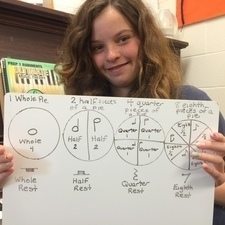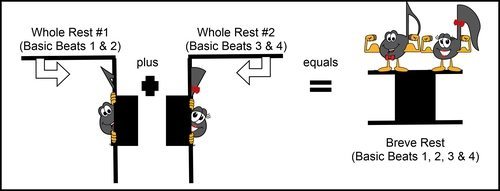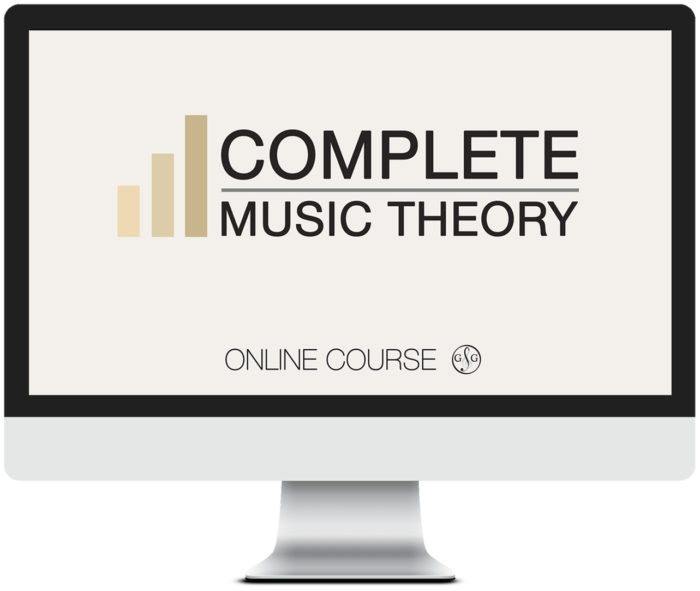Whole Rest in 4/2 Time

UMT Tips for Teaching Students about the Whole Rest in 4/2 Time
A Whole Rest fills an entire measure of silence in any Time Signature with one exception. Do you know what that exception is? That's right - a Whole Rest in 4/2 Time is different.
Having an exception to the Whole Rest rule can be confusing for students. Learn 3 UMT Tips to make remembering how to use a Whole Rest in 4/2 Time EASY!
UMT Whole Rest in 4/2 Time Tip #1: Start with only what they need to know.
In Preparatory Theory, we learn that when the Time Signature has "4" on the bottom, a Quarter Note equals one beat. Therefore, based on that mathematical equation:
- A Whole Note equals 4 beats; a Whole Rest equals 4 beats of silence;
- A Half Note equals 2 beats; a Half Rest equals 2 beats of silence;
- A Quarter Note equals 1 beat; a Quarter Rest equals 1 beat of silence;
- An Eighth Note equals 1/2 a beat; an Eighth Rest equals 1/2 a beat of silence.
 Sounds mathematically logical, right? And for beginner theory students, it is correct to explain it this way.
Sounds mathematically logical, right? And for beginner theory students, it is correct to explain it this way.
I like to draw 4 whole pies on the back of my Whiteboard and use Note Values to pre-teach Math Fractions. (I often hear from the school teachers how my young beginner piano students really "get" Math.)
On Page 58 in the Preparatory Workbook, we teach that a Whole Rest fills an entire measure of silence in ANY Time Signature.
At this level, it is perfectly correct to explain the Whole Rest Concept this way.
Why? This type of teaching is called a Step-Stone Method - students learn one step at a time. At this level, students are only familiar with a Quarter Note Basic Beat, so it is not necessary to confuse them with the "Whole Rest Exception" (since they don't understand yet that anything other than a Quarter Note can be the Basic Beat).
UMT Whole Rest in 4/2 Time Tip #2: Teach the one exception in Basic Rudiments.
In Basic Rudiments, after learning about Simple Duple, Simple Triple and Simple Quadruple Time, we now know that the Basic Beat can be notes other than a Quarter Note.
The Whole Rest Rule is now expanded as their understanding of the Basic Beat has expanded. We still teach that a Whole Rest fills an entire measure of silence in ANY Time Signature. The exception to the rule is 4/2 time in which a Breve Rest fills the whole measure.

So, what is a Breve Rest? A Breve Rest is a Double Whole Rest. I like to tell my students that, since a Whole Rest in 4/2 time has to be used for half a measure of silence, we can't use it for a whole measure of silence too. So, we take two Whole Rests, turn them sideways and smush them together to form the Breve Rest:

Okay, so that is not exactly how it was made - but they don't forget that a Breve Rest is used for a Whole Measure of silence in 4/2 time!
UMT Whole Rest in 4/2 Time Tip #3 - Use Scoops, Basic Beats and Pulses!
Use the Ultimate Music Theory Image Mnemonic devices to work through any tricky Time Signatures. When you follow the rules of the Pulses, and write in the Plus and Tilde Signs and the Scoops (even on Exams!), your students will be successful.
In 4/2 time, a Whole Rest is used to create silence for the first two Basic Beats - Beats 1 and 2 (S + w). A Whole Rest in 4/2 Time is used to create silence for the last two Basic Beats - Beats 3 and 4 (M + w). A Whole Rest in 4/2 Time is NEVER EVER used to create silence for the middle two Basic Beats - Beats 2 and 3 (w ~ M).

If you don't know why we never ever (EVER) join Beats 2 and 3 into one rest, then I would encourage you to purchase the Ultimate Music Theory Complete Workbook and Answer Book. Then, do every page - top to bottom - answering every single question. Mark each page too!
If you need motivation, then sign up for the Ultimate Music Theory Complete Course ONLINE and work through each chapter with Glory! You will not only fill in the missing concepts in your own theory education, you will learn how to teach these concepts to your students easily.
OR, if you just want to review and ensure that you know all the little exceptions to the Rhythm and Rest Rules, check out the Online Rhythm and Rest Course. You will find so many shortcuts to teaching these rules, your students will notice your increased confidence! (And the $39.97 you paid for the 8 Videos will pay for itself in saved lesson time and decreased stress!)
I hope that this gives you some ideas on how to present the Whole Rest in 4/2 Time (and introduce the Breve Rest) to your students.
Keep on Learning... With a Smile and a Song!
Shelagh McKibbon-U'Ren



Thank-you Shelagh for the in-depth tips regarding the 4/2 rest. This will be the final memory
jogger before the rcm theory exams this coming Friday/Saturday.
Regards,
Grace
Thanks Grace! I was trying to time it so that it was “out there” for the exam! It is an area that a lot of students (who have not studied using Ultimate Music Theory) make a mistake on (and then the Teachers wonder why!). So I am so very glad that I was able to help out!
Shelagh
What about 3/2 time? Robyn
In 3/2 Time, a Whole Rest is used for a Whole Measure of silence. AND…sneak peak at an upcoming blog – a Whole Rest in 3/2 Time is ALSO used for Beats 1 + 2 (S + w) of silence (But the 3rd beat can not be a half rest!). Shelagh
PS – If you are confused, don’t worry! The Whole Rest in 3/2 Blog will answer all those worries!
I didn’t know that! thanks, Aimee
Don’t be upset at yourself! This is one of those subjects that you were either taught…or your teacher probably didn’t know either! I think it is really exciting to learn something new! It makes me feel young again!
Shelagh (who is definitely NOT young! LOL)
Thanks a lot. Very best.